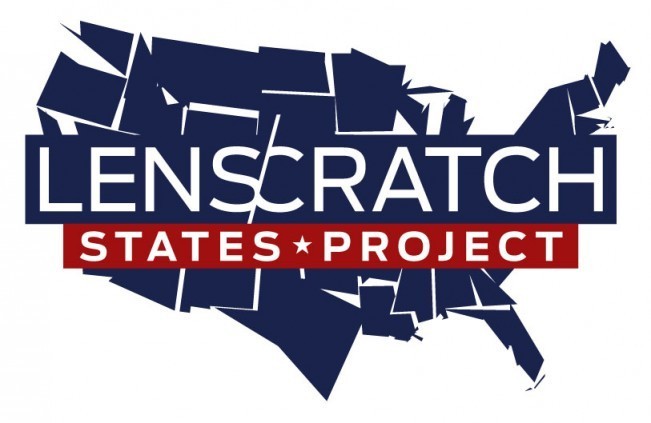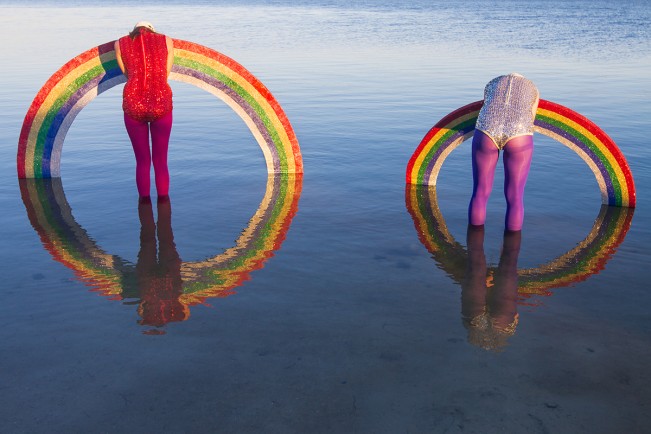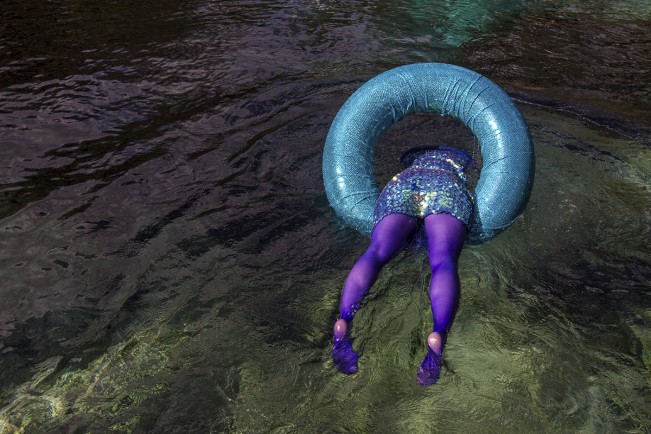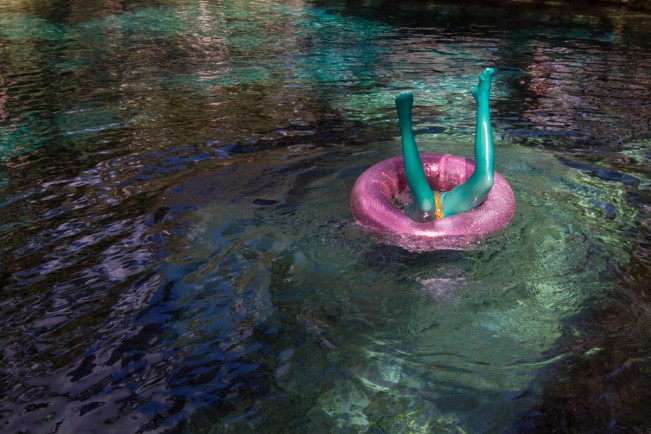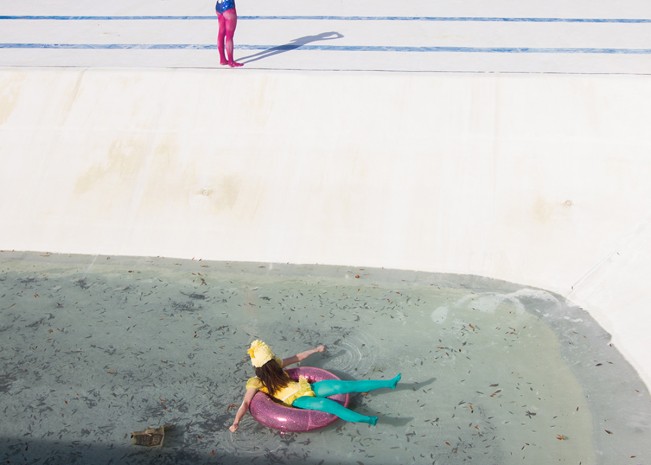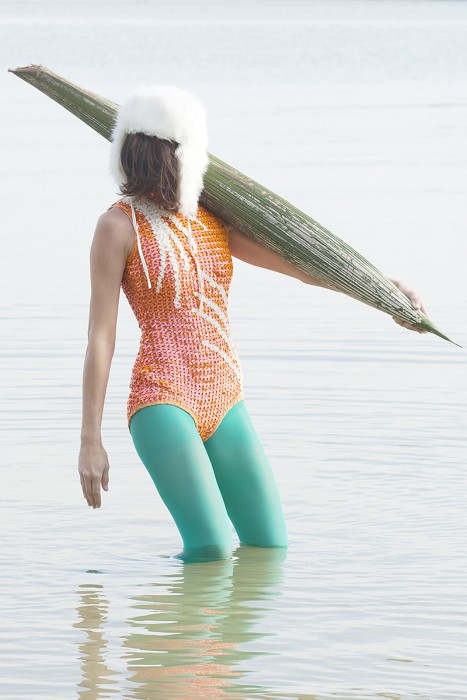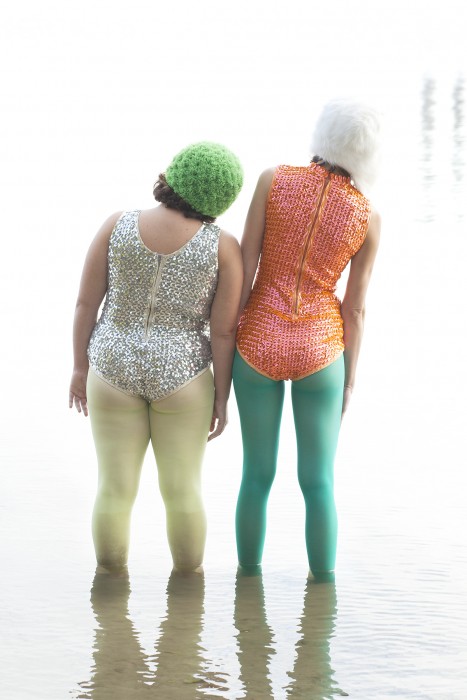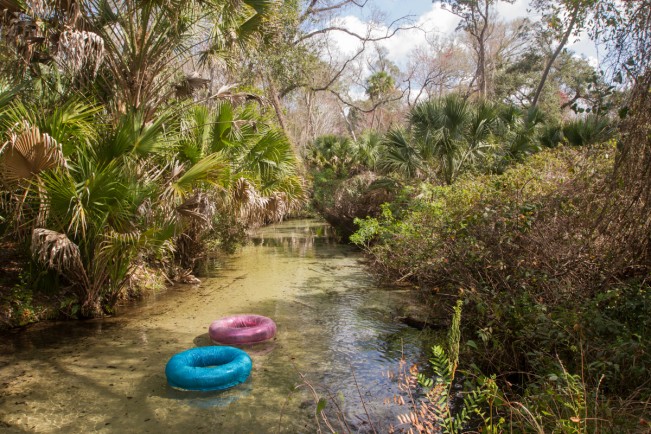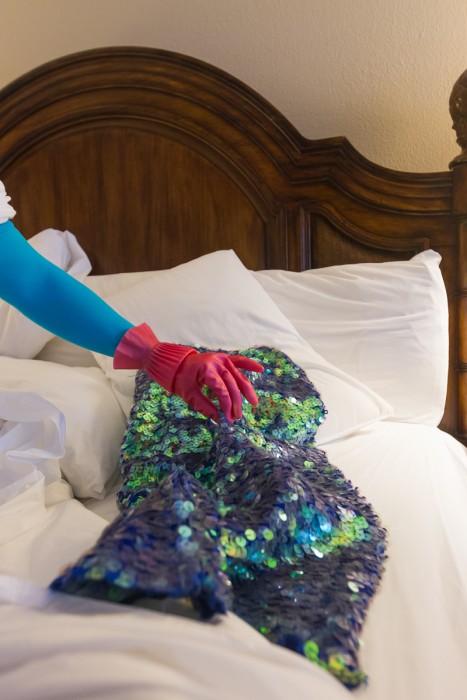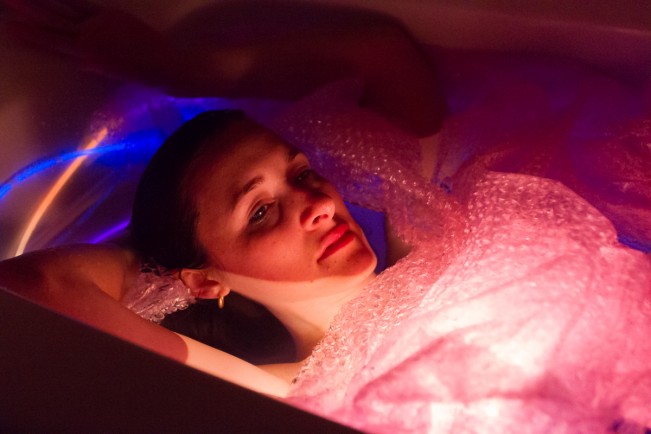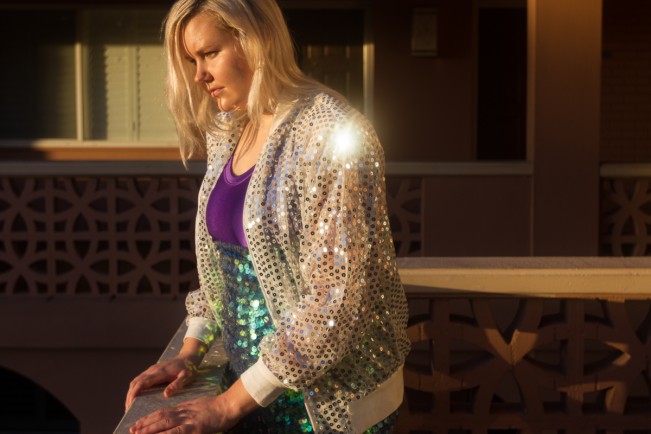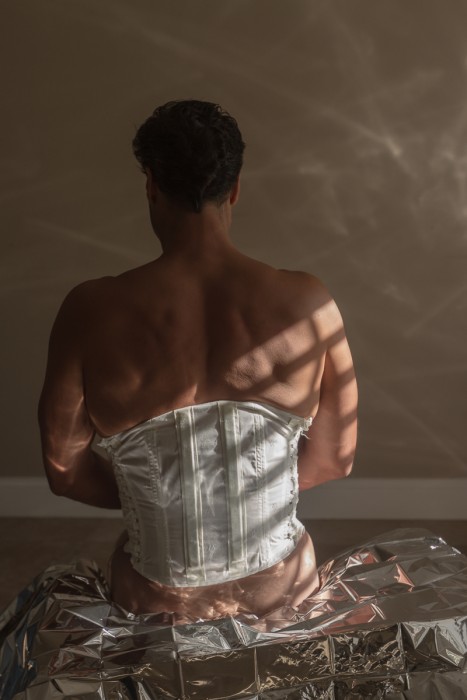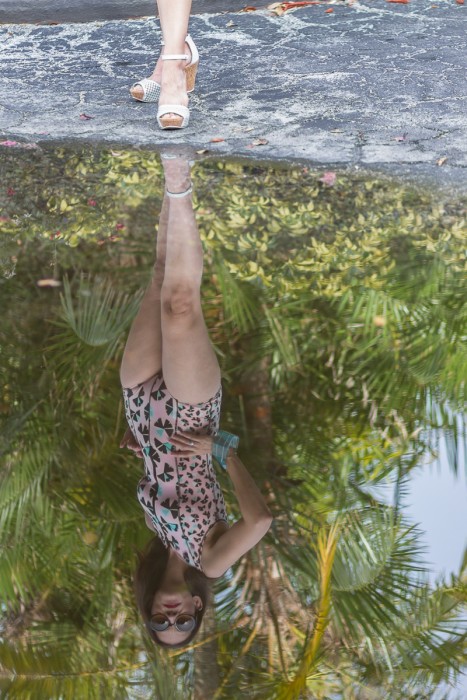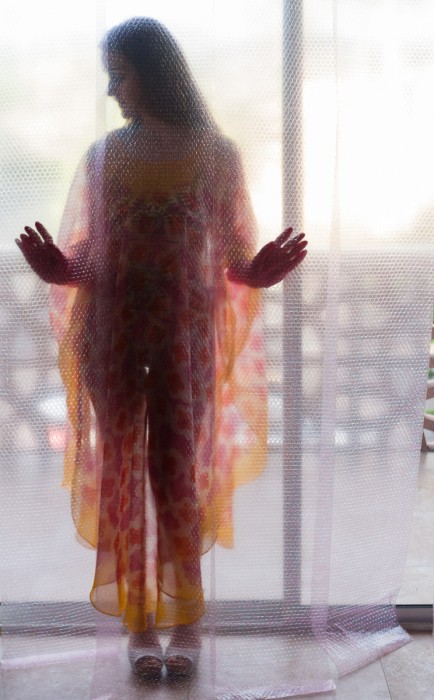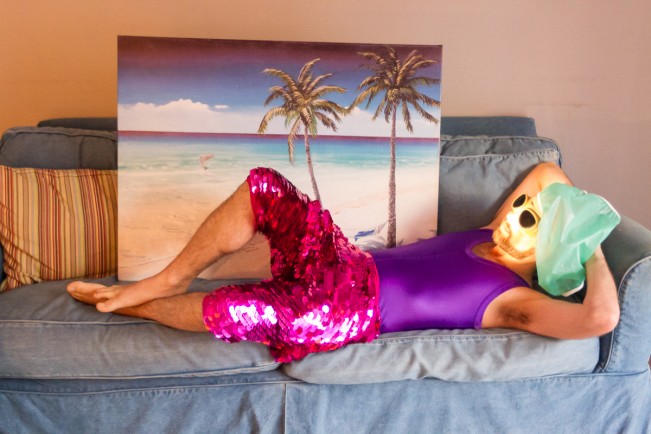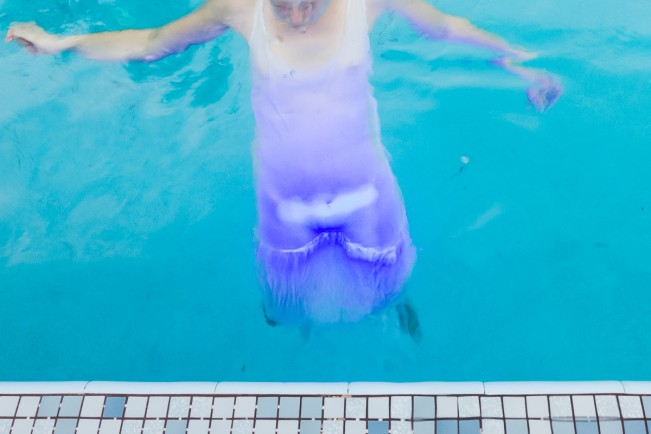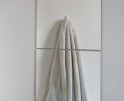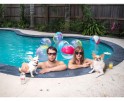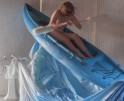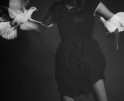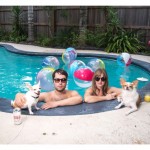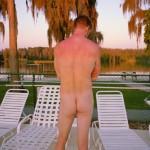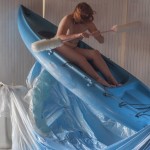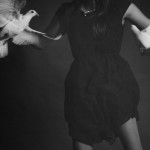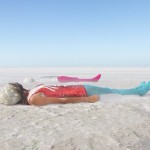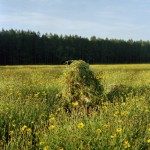Selina Román: The States Project: Florida
It is my pleasure to lead off my week as guest editor by sharing the work of Selina Román. When asked by Lenscratch to participate in the States Project, Selina was the first photographer I thought of. Her work is uniquely Floridian, shaped by her upbringing in Tampa and Miami, among other things. I know Selina from Tampa and have had the opportunity to speak with her on many occasions about her work. Her striking staged photographs often incorporate female figures cloaked in colorful custom-made outfits engaged in playfully awkward activities. Her art draws on her background as a commercial photographer and photojournalist.
Selina Román was born in Florida in 1978, and she received her Masters of Fine Arts degree from the University of South Florida in 2013. She has participated in residencies with the Visual Artists Network and Diaspora Vibe Cultural Arts Incubator in Miami. Her work, which is in numerous private collections, has been exhibited nationally and internationally at institutions such as Kenyon College in Ohio, Edna Manley College of Visual and Performing Arts in Kingston, Jamaica, and Universidad del Sagrado Corazón in San Juan, Puerto Rico.
Confidence Tastes Like a Low-Slung Cloud
Growing up in a multicultural home, I struggled to identify with the halves that constituted myself – Latina and white. My father, the heavyweight prizefighter and all of his machismo, silent bravado, and my mother, the nurturing, guilt-ridden, selfless Anglo, formed my ideas of the feminine and masculine – the lover and the fighter. Never quite feeling aligned with either half, I developed a keen awareness of the other early on. This conflation of female and cultural identities creates the context on which my work is based. Confronted with these realities, my work creates a visual dialogue that seeks to reclaim a female point of view in a macho-saturated society, all while attempting to redefine the male gaze.
Personal experience, dreams, fashion, as well as religious and cultural iconographies visually inform my work. I adopt objects and rituals from other cultures and use them in my work to locate myself within the context of feminine identity. My own cultural hybridization lays the groundwork for a continued examination of these experiences. Using formal and conceptual methods such as staged and straight photography, appropriation, sound and video, my work confronts established perceptions and norms and offers a new framework for contemplation.
In Confidence Tastes Like a Low-Slung Cloud, I present a series of images in which mischievous, faceless figures inhabit desolate environs. Unable to meet our gaze, they become inaccessible, and in turn upend traditional feminine expectations of nurturing and obedience. With their backs to us and their gazes averted, we are left to search them and the landscape for clues, likely inserting our own narrative to find meaning and connection. By employing the use of props, humorous and awkward gestures, concealment and alien landscapes, I create a quiet resistance that subverts traditional ideas of femininity and contemplates the idea that there is power in untoward behavior and anonymity.
While the series addresses feminine motifs, I also insert objects with socio-political underpinnings that act as metaphors. The presence of tubes references the tubes, rafts and rickety boats that washed up on South Florida’s shores, remnants of their Cuban inhabitants’ fleeing their homeland. While I in no way purport to place my experience at the same level as a Cuban migrant’s first-hand experience, there is no doubt that these phenomena – through location and media – have had an impact on my own and become part of my visual language. These vessels embody the open, circular and mysterious narrative that is present in my images. It is through such phenomenological connections that I reimagine these objects and experiences in a feminine context.
Correct me if I’m wrong, but you’ve spent most of your life in South Florida, in Tampa and Miami? Do you mind talking a little about your history and connection to place? Do you strongly identify with any particular place or community within the state?
That’s right – I’m a Florida native, and I have lived the most time in Tampa and Miami. I grew up north of Tampa in a suburban/rural area with lots of space, cows, horses and a lone McDonald’s. My family and I moved to Tampa when I was in middle school, and they’ve stayed ever since. After completing my undergrad in journalism, I left Tampa for Bradenton, a beach town on the Gulf Coast where I was a newspaper reporter for several years. As a journalist, it was my job to drive around and find interesting stories – that interest also included making sure they were just as compelling visually for the photojournalist who would get assigned to the story. So due to the nature of my job, I became connected to Bradenton, by way of its people, history, and landscape.
I try and connect to every place I am in. But Miami, Miami is a different story altogether. Miami is everything –beauty, opportunity, tragedy, migration, sex, failure, and redemption. I fell in love with Miami during a trip to South Beach as a young child in the 80s when the colors were more muted, and Jewish retirees still populated the landscape. Later in life, I decided to move there and see if the magic still remained. It did and I loved every minute of the five years I stayed. In Miami, a vibe pulsates through the city that anything is possible. So many people are from somewhere else, and this ebb and flow of coming and going keeps things interesting. It kept me wanting more – it’s intoxicating.
As a Florida native living in New England, I feel like I’m often defending my home state. I know a lot of things go down here that provoke the ire of the nation, but do you think Florida gets a bad wrap or is the national criticism deserved? What is like for you to make and show art in this place?
First, I unapologetically love this state. Secondly, there are a lot of twisted things that happen here. I think someone likened it a syphon, that all the bad, weird, strange things drain into the sunshine state. I think a lot of the criticism is deserved but at the same time, some of the things that make our state loathsome makes it sort of wonderful. Of course, a lot of people are going to take issue with that statement, but I’m coming from a news background. Normal never makes the news.
I love to make work here. The landscape – from the swamps to the beaches and the architecture – inspires me. I’ve lived here all my life, and there is still so much to explore.
You have a very distinctive color palate, with lots of saturated blues, greens, and pinks. Your photographs have always seemed to me that they were made by a person from south Florida. Do you think growing up where you did has informed your relationship to color?
I definitely do. Growing up with lots of sunshine, bright blue skies, their pink and orange sunsets and sparkling turquoise water certainly laid the foundations for my visual aesthetic. So has Florida’s colorful architecture, especially Art Deco. As I mentioned before, that trip to South Beach as a child had a profound impact on my ideas of color and beauty. At the same time, all that is colorful is not beautiful. There can be a lot of garishness that comes with color – I enjoy that side of the coin too.
How did you get into photography and what has shaped your style? Do you have any notable influences?
I’ve loved photography since I was a child when I posed my cousins in backyard biblical scenes with my Polaroid One Step. However, as much as I enjoyed photography I always considered it a hobby. It wasn’t until my late 20s in Miami when I was apprenticing with a local fashion designer that I rediscovered my love for the image. I jumped into fashion photography and pretty soon after my work began to take a more conceptual turn.
Without a doubt, fashion photography has shaped my style. I love its unapologetic slickness, and it’s accessibility. I often revisit the work of fashion photographer Guy Bourdin – his images are beautiful, yet dark and unsettling.
I also look at the work of Roger Ballen, Vivianne Sassen, Todd Hido and the film La Jetee.
The figures in your photographs are typically female. They often wear sparkly jumpsuits and have their faces covered and bodies contorted, as if they are malleable formal elements. Can you talk a bit about how you utilize the figure in your work?
Covering faces goes back to when I made a series of images about the burqa wherein I was interested in the idea of anonymity and what that meant visually and metaphorically. Even as I moved on from that project, I continued to conceal my subjects’ faces. I found that doing so created a mix of uneasiness, mystery, and lingering questions. Without the face with which to connect, you focus on all of the other details in the image – the action, the place, the clothing – and assemble the narrative from there.
I have a motto when it comes to posing models: if they are uncomfortable and/or in pain, then they are doing it right. It typically comes in the form of aching muscles, sensory deprivation, submersion and overall fatigue. That’s when the visual tension happens and that’s what I’m interested in. My models are such troopers for putting up with what I put them through!
In regards to your photographic practice, you seem to be more of a farmer than a hunter. However, there is a mixture of staged photos with the more reactionary, documentary shots. What is your favorite way to make pictures?
I love to plan, but I leave plenty of room for surprises. Often I will have the idea for an image in my head. I will sketch it, visit the location, but it’s not until myself and the models are there that I know what will happen. For instance, the way shadows play on the scene, an unexpected gust of wind or an abandoned seed pod that looks like a relic missile. So many times these occurrences add that extra layer of oddity that make the images click.
I definitely think my attitude toward working comes from my journalism days where I spent so much time just observing. The shoots feel like mini-performances and often I will take a moment to just watch the scene unfold before I click the shutter.
You’re currently working on a series of collaborative portraits, where you’re inviting people to join you in hotel room? Can you please talk about that project and take us through some of the new photos?
The project is called Please Disturb. It arose out of a need of not having a proper studio in which to work and invite visitors, which I’ve sorely missed since getting my MFA. I figured by check out time I would have the beginnings of a new project. It also melds many of the things I’m interested in – portraiture, performance, motels, and deadlines.
In two-hour blocks, people come visit me in my room. We casually talk and then strategize about how they’d like to be photographed. Some guests were very open while others told me right away “None of my face!” or “No nudity!” And I loved that – that we set up these parameters and worked around them. Like each participant, each session was different, and I enjoyed the back and forth of ideas, testing boundaries and seeing how each person interpreted the space and the props that I brought.
Since the project is so new, I haven’t decided how I will title the images or in what sizes they will be printed. At the moment, I’m referring to them as studies. As I edit, I feel there is a narrative bubbling to the surface as the props and garments repeat in the images, like the bubble wrap, the rubber gloves, and the mermaid fabric. For example, I really like the crime scene vibe that happens in the image where the pink rubber-gloved hand delicately lifts the sequined fabric from the bed. The fabric shows up again in the image Morning Balcony Study where a woman bedecked in sequins stands looking out, the sun shining on her and a shadow from her hair cuts a line down her face. I enjoy wondering how the two are related and imagining what might have transpired in between these moments.
I can’t wait for the next one and am already scouting motels.
Do you have any upcoming shows or projects that you would like to plug?
I’m in two group shows this fall – one at Tempus Projects in Tampa with the photo collective I am a part of, Fountain of Pythons, and in other show with two talented artists friends that will combine painting, installation, animation and photography at the art gallery at Blake High School in Tampa, a magnet high school for the arts.
In 2016, I have a solo show at Gallery 221@HCC (Hillsborough Community College). I’m especially looking forward to showing in such a terrific space and utilizing it for the Please Disturb images.
Posts on Lenscratch may not be reproduced without the permission of the Lenscratch staff and the photographer.
Recommended
-
Chris Otten: The States Project: FloridaAugust 23rd, 2015
-
Roy Albert Berry: The States Project: FloridaAugust 22nd, 2015
-
Katty Hoover: The States Project: FloridaAugust 21st, 2015
-
Kristen Roles: The States Project: FloridaAugust 20th, 2015
-
Annie Donovan: The States Project: FloridaAugust 19th, 2015


